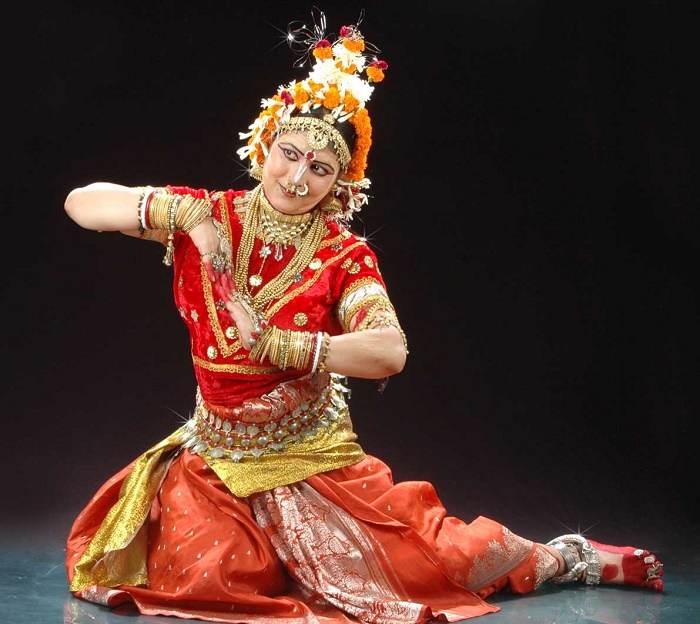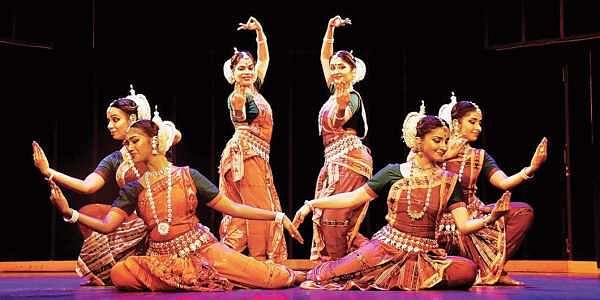The art and tradition of the eastern coastal state Odisha is sophisticated and auspicious. The rich culture of Odisha is the blessing of the Lord of the universe, Lord Jagannath. One of such cultural practices of Odisha is Odissi dance. Also known as Orissi in older literature, Odissi is a major ancient Indian classical dance that originated in the Hindu temples of Odisha. The dance is a form of expressing religious stories and spiritual ideas related to Lord Jagannath. The dance also showcases traditions and culture of Odisha. Broadly speaking, Odisha is the home to the ancient and diligent dance Odissi (Odishi).
Odishi Dance is often performed by solo or in group and is an authentic classical dance originated in Odisha.

The dance is having both sensuous and lyrical attributes. It connects the love and passion. It is a link between the divine and the human, the sublime and the mundane. The present day Odissi Dance can be traced to the The Natya Shastra in which the typical dance style is mentioned. In the ancient text, a dance form described as Odhara Magadha resembles Odissi.
History of Odissi
Archaeological evidences from 2nd century B.C.E. can be seen in Udayagiri and Khandagiri caves belonging to the history of Odishi dance. Odissi was beloved to the Kings and was performed in every palace. It was also a tradition of Jagannath devotees to perform Odissi dance. Many temples built in those era has a special stage for the dance performance called as Natya Mandap.
A high stylised dance with expression of act and a subject, Odissi is based on two great texts of all time, The Natya Shastra and The Abhinaya Darpana.
The Abhinaya Darpana Prakasha by Jadunatha Sinha, the Abhinaya Chandrika by Rajmani Patra, and the Abhinaya Chandrika by Maheshwara Mahapatra are the sources behind the magnificent dance style. The dance is based on diverse themes inspired from creative literature and ancient subject.
You can read our another post on Progress of Bee Keeping in Odisha
Speculations on Origins
When comparing Odissi with Bharatnatyam, it is easily evident that the primary difference visible is the position of the arms. In Odissi, the elbows are bent, giving the dance a curved gait. Bharatnatyam on the other hand has straightened arm positions.
The theory is that the dances evolved based on the poses depicted in temple stones in the region. The stones in Odisha are smaller than that in Tamil Nadu, so to accommodate dance poses in full, stone carvers used bent elbows. As dancers were influenced and inspired by temple sculptures, they copied these poses and Odissi gained its signature trait.
The Chronology Of The Dance
Odissi dance has an order of presentation to systematically put together to deliver the desired rasa. The order in which the dance is performed is as follows.
MangalaCharan
The opening item of the dance where the dancer slowly enters the stage with flowers in his/her hands and makes an offering to mother earth. This is followed by an invocation to the deity of the dancer’s choice. Generally, Ganesha is called upon to grant an auspicious beginning. The item ends with a nritta sequence with salutations to God, the Guru and the audience.
Batu
In this item, the basic concepts of the Odissi nritta techniques are highlighted bringing out the duality of the masculine and the feminine through the basic stance of the chauk and tribhanga. This is danced in praise of Batukeshwar Bhairav or Shiva. The accompanying music is very simple — only a refrain of dance syllables.
Pallavi
The next item is the flowering and ornamentation of music and movements or called as Pallavi. A musical composition in a particular raga is visually represented by the dancer with slow and subtle movements, building up into complex patterns highlighting rhythmic variations within the tala structure.
Abhinaya
This the item that forms the main part of the dance. The subject or theme of the dance is portrayed through dance moves and rendering gestures called as Abhinaya.
Movements and Techniques
There is a close following of Odissi dance behind the Natya Shastra. There are nine rasas in the dance. A feeling or emotion is expressed by a rasa. Facial expressions, hand gestures and body movements denote such feeling or rasas. There are two basic techniques of movement. The Chauk and the Tribhanga.
The chauk is a position imitating a square — a very masculine stance with the weight of the body equally balanced. The tribhanga is a very feminine stance where the body is deflected at the neck, torso and the knees.

A very unique feature of the Odissi style, Torso technique is a very important one. With the lower half of the body remaining static, the torso moves from one side to the other along the axis passing through the centre of the upper half of the body.
There are also a certain foot positions with flat, toe or heel contact. These are used in a variety of intricate combinations.
There are also numerous possibilities of leg movements. Almost all leg movements are spiral or circular, whether in space or on the ground.
In addition to the leg movement, there are a variety of gaits for doing pirouettes and jumps and also certain postures inspired by sculptures. These bhangis, as they are called are really units of movement ending in one particular stance.
A lot of training and practices are required to deal with the classical and magnificent dance.
Conclusion
The main theme of Odissi dance is based on drama genre. Typically, a mythology, a spiritual or devotional text or poem is portrayed through the dance depicting hindu culture, using body movements and facial expresseion in an alluring way. Abhinaya and Mudras are the keys to describing the theme.
The subject or theme is the main content that binds the audience. The group performance of Odissi dance show casing diverse themes is mind blowing to watch. Modern day Odissi dance is being mixed up with cultural fusion and is being appriciated internationally as well. Odissi was the only Indian dance form present in Michael Jackson’s 1991 hit single Black or White.
